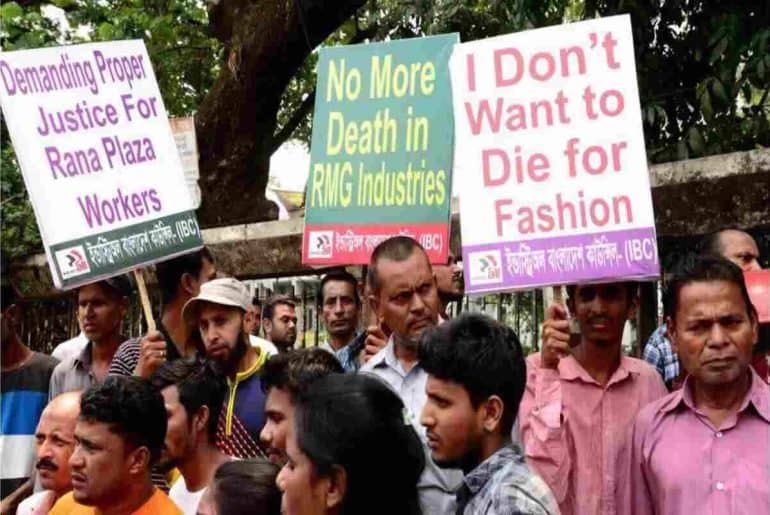Present age has taken the definition of ‘trends’ to a whole new level. Now, trends come and go in the blink of an eye. But behind these fleeting trends, lie multiple implications that sound the alarm for something far-more concerning.
This hyper-fast generation is quick to tug you with them, oftentimes not even realising that you are now a participant in this hustle of life. One such area is the bustling world of fashion, which has become more fast-paced than ever. Basics don’t do it anymore, the need to stand out and receive compliments on your outfit is stronger than ever. OOTDs, try-on hauls, must-have items, outfit ‘inspo’, aspirants wish to pull a Komal Pandey and carve their name on the social media landscape. The world of micro-trends, fast fashion and ultra-fast fashion is aided by a hyper-presence of social media in our daily lives. Overconsumption has become normalised, but the planet and the marginalised workers, in particular, bear the brunt of this phenomena.
Fast fashion refers to the production of cheap clothes in accordance to the rapidly changing fashion trends, to profit from the newest trends at the height of their popularity. Consumers try to fit in and keep up with the micro-trends by overconsumption of these inexpensive fast-fashion apparels. But the rationale behind this overconsumption drive is that these clothes go out of style or simply wear out due to their cheap materials after a short while, and subsequently the garments are discarded after a few wears. Then, we behold another micro-trend that grips the masses, and the cycle resumes all over again. You might recall the Maddy outfit phenomena that stormed the internet when Euphoria peaked, or the recent Barbiecore with the release of Barbie, when people all around were rushing to add their contribution these trends. It is quite evident that social media plays a major role in creating the demand for fast fashion.
The Haul Culture created by social media is a prime example. It started with SHEIN, then moved to other popular websites and brands like Urbanic, Urban Outfitters, ZARA, FOREVER 21, H&M, FASHION NOVA, UNIQLO to name a few. The growing popularity of short-video content like Reels, TikToks and YouTube Shorts is indeed a driving force behind these trends. This is accompanied by the rise of influencers and micro-influencers which is also leveraged by brands. Brands have started mass-collaborating with hopefuls seeking to increase their social media presence. In turn, their audience gets inspired to follow their footsteps and starts buying from the same platforms. Brands have also partnered with social media platforms to collect extensive data from consumers, so any person expressing even the slightest interest on their platform gets bombarded with advertisements of the product or similar products. And so, these attractive advertisements successfully promote impulsive and unnecessary purchases.
But the truth is, these attractive prices come at a cost of something far greater. This pocket friendly price comes to you after cutting the wages of overworked marginalised workers. The globalisation of supply chains in the fast-fashion production system has led to serious violations of human and labour rights. The labour force to make these newest trendy garments comes majorly from developing countries like Bangladesh, India, Cambodia and Myanmar, to name a few. The labour force is made up of primarily women and children, who work under terrible conditions and do not receive even minimum wage. The working hours are intense, and the deadlines very short owing to the ‘fast’ fashion. Many such big names like SHEIN, H&M and ZARA have been exposed for violating several labour laws and exploiting workers. According to Fashion Transparency Index 2023, only 1% of brands disclose the number of workers being paid a living wage. It won’t be far-fetched to equate this exploitation with modern slavery.
Additionally, the environment also pays the true cost of the cheap garments. Micro-plastics are some of the primary materials used in the cheap clothes, which end up piling on the landfills, polluting oceans and cause serious damage. The discarded clothes end up as overflowing heaps of waste. The industry also uses huge amounts of energy and water (an estimated 93 billion cubic metres a year) and generates up to ten percent of global CO2 emissions. Dyeing and finishing not only emit huge amounts of greenhouse gases, but also cause water pollution. Resources are depleting rapidly, to meet the false demands created by the fast-fashion sector.
The way forward for industries is to address the lack of transparency in the global supply chains, which has been the root cause of exploitation of workers. As consumers, the onus lies on us to ensure that we make informed choices about the brands that we consume from. The age-old saying “quality over quantity” can easily be applied in this scenario. So rather than investing on heaps of cheap, low-quality clothes that are both unsustainable and a fruition of exploitative practices, invest on good-quality clothes that you know would survive fleeting trends. Make the best out of your investment and wear the apparels for as long as possible. The 5 Rs of Fashion: Reduce, Rewear, Recycle, Repair, Resell all the way! Thrifting is very much in, since you care about trends.
Read also:The Beauty Facade : Instagram Trends
Featured Image Source: BBC
Sarah Nautiyal

